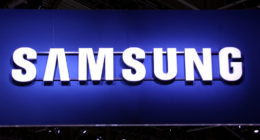On 28th April 2017, General Motors India asked its approximately 150 dealers to prepare for the launch of the new generation Beat. The brochure that was mailed to the dealers stated,
This July, be ready for the Mobility revolution with the New Beat MCM from Chevrolet.
Just about a week later, in the first week of May, there were suddenly rumours that General Motors India had a huge announcement to make: they were leaving India. But, not many paid attention to this rumour as there have been several such instances in the past that the company has been quick to squash, according to dealers. Additionally, they believed General Motors would not exit one of the world’s fastest growing markets.
On 18th May, General Motors shocked its dealers and customers alike by announcing that they would be exiting the Indian market, although it was the world’s fifth largest in sales, as a part of a global restructuring exercise.
General Motors’ decision to stop selling cars in India this week is driven by global compulsions that don’t affect just our country. The company is also exiting the South African market. However, GM intends to continue exporting cars from India and will also still maintain its technical centre, R&D facilities, and sourcing.
The company’s dealers now find themselves in a terrible position and have warned of about 15,000 jobs being lost, as well as the potential loss of thousands of crores from the 18,000 GM cars that may not find any buyers now.
Customers are equally upset with most of them worrying about the resale value of their cars, especially of premium vehicles that are just a few months old.
A GM India spokesperson responded with,
Last week’s announcement was a difficult one for GM India and a decision that was not taken lightly at all. It came after a lot of careful considerations and planning and after we assessed many different options.
According to a communication from GM to its dealers, the service agreement between the two parties will end on 31st December 2017. The exit of the company marks the end of a rather long journey. GM started in 1994 with Hindustan Motors in a 50:50 joint venture and then bought out HM’s stake in 1999. In 2009, the economic crisis forced GM to become a 50:50 venture again with its Chinese partner, SAIC. In 2012, it bought 43% of this share, taking its stake to 93%.
Along with this constant fluctuation, GM faced other problems such as a constant rotation of the top executives with 9 CEOs in approximately 21 years. Additionally, there was a lack of consistency in the product strategy and marketing in India.
GM’s monthly average sales has been less than 900 markets and the Tavera recall of 2013 with over 114,000 vehicles being recalled because of emission problems was the highlight. But in July 2015, chief executive Mary Barra made a statement in which she said that the company was planning to shut down the Gujarat facility and invest a billion dollars to revive its India operations. The opposite seems to be happening right now.
GM dealers are angry as they claim there were kept in the dark even when they asked executives at the India subsidiary who were aware of the exit plan. According to one of them, “They kept giving us false assurances whenever we confronted them on the rumours.”
However the GM India spokesperson said that the final decision was recent stating, “As soon as the business decision was made, we updated all our stakeholders as early as we possibly could.”
Dealers have been sent a non-disclosure agreement from GM which speaks of a “transition assistance programme” that aims to prepare dealers for expiration of retailer sales and service agreement on 31st December 2017.
However, two of the aggrieved dealers have refused to sign the agreement and the company has now asked FADA (the Federation of Automobile Dealers Associations) to intervene on their behalf.
While there is a possibility that GM could return with a new management under more favourable conditions. If this were to ever happen, it would not be an easy task. It is important that for this to happen, the company should not leave India on a bad note.




